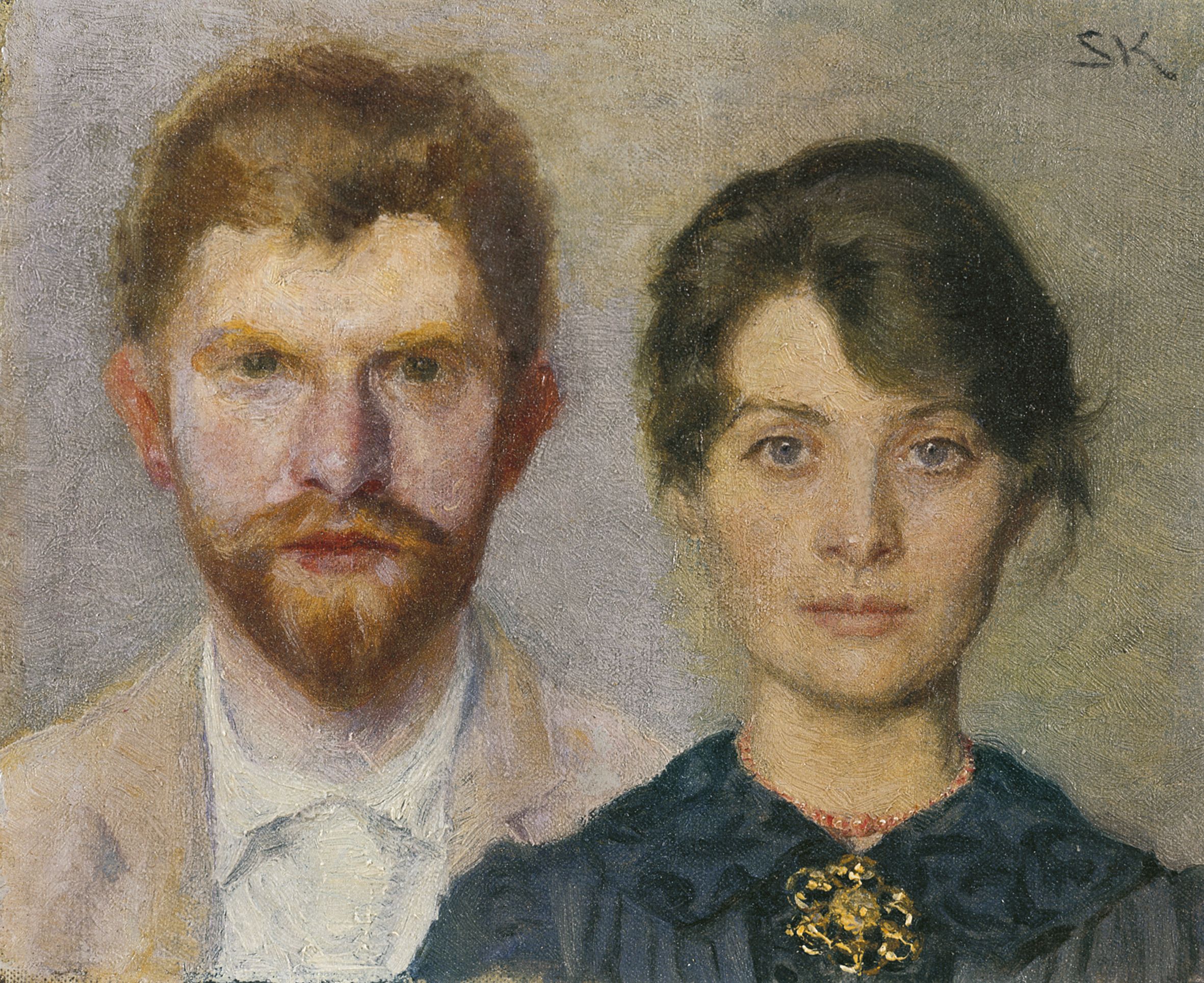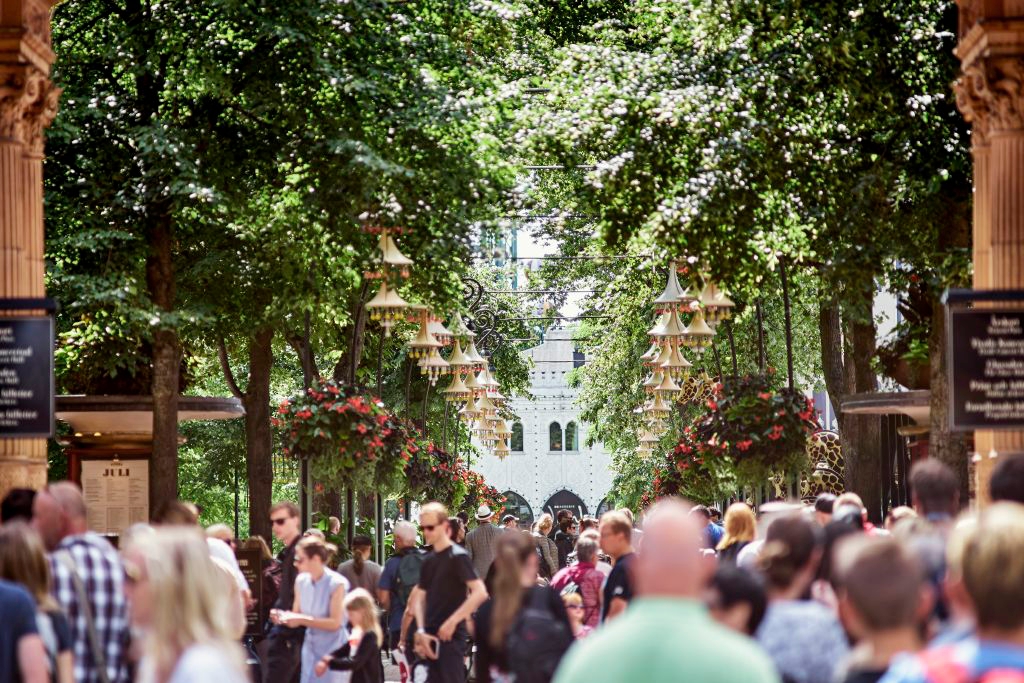Marie Martha Mathilde Triepcke wanted a life full of passion and art. She got it, but perhaps not quite as she imagined.
Born in 1867 to German parents in Frederiksberg, she would grow up to become the beautiful but scandal-ridden Marie Krøyer Alfvén, a significant member of the Skagen artists’ community in northern Jutland.
From a young age Krøyer showed talent as an artist, but unfortunately the 1800s was not a time when women studied art in a professional capacity.
Women were not admitted to the Royal Danish Art Academy until 1888. Even then, the popular artists of the day, like Kristian Zahrtmann, actively supported a masculine attitude in painting, considering this a sign of creative innovation.
Despite the dominant views, Krøyer remained passionate about art. Her parents and art world patrons supported her in her efforts.
Her dedication led her to study at the age of 16, when she started taking drawing and painting classes in private homes.
Taking classes and attending museum exhibitions in Copenhagen introduced young Krøyer to the art world, bringing her into contact with the painter Peder Severin Krøyer.
Puppy love
PS Krøyer, 16 years Krøyer’s elder, would become her first great love. She was initially introduced to the celebrated painter through an exhibition at Charlottenborg Art Museum, where she saw one of his paintings.
Krøyer eventually began studying painting under PS Krøyer in 1887. She also sat as a figure model for several of his paintings, including, ‘A Duet’.
But he paid little attention to her at the time and she was focused on her own painting. She did not want to be married because she saw that as an end to her life as an artist.
Krøyer began travelling to the Danish countryside to paint, visiting the small town of Skagen that was gaining a reputation around Denmark as an artist colony.
Impressionism meets realism
Artists began coming to the area in the early 1870s to paint in the open air, motivated by the concurrent French Impressionist movement.
The distinctive light in the coastal community inspired the artists.
Their paintings evolved into a unique style that blended the Impressionist influence with a modern realism, capturing bits of everyday rural Danish life, such as fishermen at work by the sea.
Krøyer continued to study painting in Copenhagen; always self-critical, she still wanted more from her art.
So, at 21, she travelled alone to Paris to continue her education. In Paris, she quickly became associated with other Nordic artists in the European art capital.
She studied at a French atelier (workshop), the Pierre Puvis de Chavannes, where she met the Danish artist Anna Ancher, who had grown up in Skagen and married the Danish painter Michael Ancher.
The two women would become lifelong friends. Ancher remained supportive of Krøyer when her marriage with PS Krøyer began to deteriorate.
Putting his bachelor days behind him
PS Krøyer, before marrying Krøyer, was a ladies’ man, uninterested in marriage. In fact, through his many love affairs he had contracted the most feared sexually-transmitted disease of the day: syphilis.
He did not envision meeting a woman who would inspire him to settle down when he went to Paris in 1888.
In Paris, PS Krøyer met Krøyer for what he thought was the first time at a popular café.
Struck by her beauty, he was surprised to realise that she was his former figure model from Copenhagen. After a whirlwind Paris romance, they married in Germany in the presence of Krøyer’s parents.
PS Krøyer did not tell Krøyer he had syphilis or his family’s history of mental illness.
For her part, Krøyer did not question their rapid leap into marriage, an institution of which she had previously been sceptical. Krøyer was in love and enjoyed the dynamic social life of being part of an art world power couple.
The newlyweds moved to Skagen, marking the beginning of a prolific time for the artists.
PS Krøyer painted signature paintings that captured the Skagen mood like ‘Hip, Hip, Hurrah!’ (1888), which depicted the artists’ friends celebrating at an outdoor summer meal. Krøyer continued to practice her own painting skills, exhibiting work in Copenhagen at the opening of the artist-run exhibition space, Den Fri Udstilling, in 1891, but she was plagued by constant self-doubt in her artistic ability.
Slipping into insanity
They had their first and only child, a daughter they named Vibeke, in 1895.
Unfortunately, the romance soon fell apart. PS Krøyer was a manic-depressive and while he was active, painting and celebrating with friends when gripped by his mania, when he was depressed he could not work.
At first, Krøyer was happy but as the years progressed, the dramatic mood swings took their toll on her ability to support him.
She eventually learned of her husband’s syphilis, which caused further angst. In 1900, PS Krøyer was referred to hospital after a mental breakdown, and things were never the same between the couple after his stay there.
In 1902, Krøyer travelled with Vibeke to Italy to take some time away from her troubled family life.
There she met her second great love, the Swedish composer Alfvén. Krøyer asked PS Krøyer for a divorce, but the mentally-unstable painter would not grant one. Krøyer returned to Skagen but was incredibly depressed.
Seeing her sadness, PS Krøyer invited Alfvén to visit, which caused great scandal in the tiny Jutland town. Krøyer and Alfvén continued their romance with the awkward permission of PS Krøyer, who did not grant a divorce until 1905, when Krøyer became pregnant with Alfvén’s child.
The divorce from her miserable first marriage did not bring Krøyer happiness, however.
She soon discovered Alfvén’s numerous affairs with other women, and PS Krøyer insisted on keeping Vibeke in Skagen with him. Krøyer gave birth to her second daughter, Margita, in 1905 and moved to Sweden with Alfvén, but didn’t marry him until 1912 when Margita was due to start school.
Meanwhile, PS Krøyer died in 1909 from the complications of syphilis and his mental illness.
In 1928, Alfvén asked Krøyer for a divorce, which ironically she did not want to grant him, even though they were no longer living together as a married couple.
She finally agreed to end the tumultuous relationship in 1936. Alfvén promptly married another woman several years his junior, while Krøyer died alone, from cancer, in Stockholm in 1940.
Artist’s plight
Krøyer only wanted to be in love and make art, but her tragic relationships brought complications and sorrow throughout her life.
Her scandalous romantic life, and perhaps her lack of confidence in her ability to paint, led to Krøyer devoting her considerable creative energy to interior decorating and furniture design.
Her work on the interiors of her home in Skagen and the home she shared with Alfvén near Tällberg in Sweden was highly respected and admired.
Today, one can visit the Skagen Musuem (skagenmusuem.dk) to see examples of her paintings and her interior designs, as well as the paintings of PS Krøyer, which depict his beautiful, but melancholic wife.
















